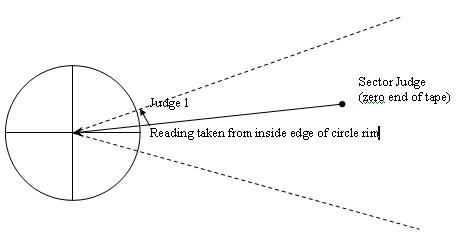
Ashburton Little Athletics Centre Inc
powered by TidyHQDiscus
Discus
What is a discus?
A discus is an implement in the shape of a plate, that the athlete has to
throw as far as they can. They can be metal or plastic and metal.
How heavy is the discus?
U6, U7 350g
U8, U9, U10 500g
U11, U12, U13G 750g
U13B, U14, U15, U17G 1kg
U17B 1.5kg
How do you throw the discus?
The following is the technique for throwing the discus, however it takes time and practice to perfect it. As long as the athlete throws the discus in a safe manner, anything goes.
Can the discus be thrown underarm?
Yes, and it is a perfectly valid throw. For the younger athletes it may take a while to be able to make a discus fly flat. In fact the discus can come out of the hand in any way, even out the back. If thrown correctly however, athletes will get a bigger throw.
When is a foul recorded?
Where do I measure from?
What are some basic rules?
- Athletes must commence the action from a stationary position inside the circle - meaning they cannot do a run up from outside the circle
- The athlete must not leave the circle until the discus has landed.
- Athletes must be told the reason they have been fouled.
- If the discus hits the cage, bounces off and lands inside the sector line this is not a foul.
- Athletes can enter the circle from any direction (front OR back), but they must exit from the back half of the circle.
What are the safety considerations?
What are some “Handy Tips” for conducting discus?

